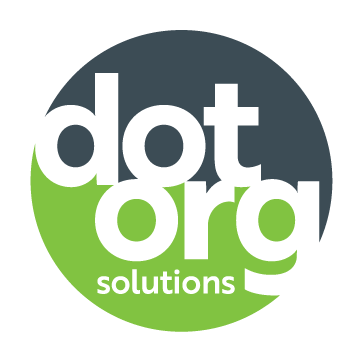Five ways to make your nonprofit’s social media engaging and effective
Social media is not only an important part of any nonprofit’s marketing plan, but it's also important for it to be engaging and effective. Sites like Facebook, LinkedIn, Twitter, Instagram and more allow people to form connections, learn more about brands and companies and communicate efficiently. Over the last several years, social media has grown exponentially in popularity and in relevance. In fact, according to a study conducted by Hootsuite, 67% of business employees surveyed agree that social media will contribute to their bottom line and 87% said that social media is important to stay competitive.
In general, organizations should build and cultivate a strong social media presence in order to create brand awareness, communicate with audiences, increase lead conversions and revenue and more. Nonprofit organizations are no exception. Like their for-profit counterparts, nonprofits should use social media to strengthen their organization’s reach and identity, communicate with people who may need or benefit from their services and share their story in a way that encourages people to volunteer and donate.
If you work in a nonprofit and want your organization to have engaging social media platforms, here are some best practices you can implement:
1. Decide what social networks work best for your nonprofit.
This is the first step we typically take when working with clients on a social media strategy. One social media platform is not necessarily “better” than another; however, there are certain platforms that are better for certain organizations.
You do not want to waste your time and resources posting on a social media platform that is not reaching your target audiences. Sometimes the platforms your organization should be utilizing seems obvious. If you are an arts organization with great visual content, Instagram or Pinterest probably make sense for you. If you have quality video content to share, you will probably want to post it on YouTube and share it on Facebook. If you are looking for a way to share information on a platform that is fast-paced and lends itself to conversation, you may want to use Twitter.
If you are already managing multiple platforms but feel overwhelmed by the time it takes to manage the page and underwhelmed by your reach, remember that you do not have to be on every platform. This is especially important for small nonprofits or small marketing teams. Pay attention to your intended audience and your current engagement. If you find that your Facebook page is getting significantly more traction than your Twitter page is, focus on posting more quality content through Facebook. If you can only manage one platform, pick the one with the most impact and skip the others.
2. Focus on quality over quantity.
It can be tempting to post as much content as possible on your social media platforms to try and engage your audiences. However, sometimes posting too frequently can have the opposite effect on the people you are trying to reach.
Focus on only posting or sharing content that is relevant to your followers on your social media platforms. If you are unsure if what you are posting is relevant, ask yourself this question:
“If I were to stand in front of a room of people that my nonprofit serves and summarize my social media post aloud, would they be engaged?”
If your organization is providing a new service, that is definitely worth sharing on social media. If it is a silly holiday, such as National Dog Day, perhaps you should just share that on your personal Facebook page. (Unless, of course, your nonprofit is a no-kill shelter or a humane society – in which case, proudly tell your nonprofit’s followers about this holiday.)
Creating a content calendar can help you stay organized and ensure that you are regularly reviewing your posts to make sure they are relevant, timely and engaging.
3. Share images and videos that tell stories on your social platforms.
Posts with visual content attached perform significantly better on social media platforms than those that do not. In fact, according to Sprout Social, Facebook posts with an image have an 87% higher interaction rate than plain-text posts. And videos reach 135% more people than posts with images.
Still, it is not enough to post a selfie on your social media and expect your followers to like and comment. Social media is a wonderful tool because it allows its users to tell stories. Make sure that the visual content you are posting speaks to your audiences, and accurately represents your brand.
If your organization helps underserved students find scholarship opportunities, perhaps you could share a video of one of your students receiving their college acceptance letter. If your organization provides resources to homeless veterans, consider sharing a picture of your volunteers collecting nonperishable items.
Find the visual content that shows followers your organization’s mission – and make sure you have permission from your subjects to share that content.
4. Don’t underestimate (or overestimate) the “Donate” button on Facebook.
Many charitable and philanthropic organizations have limited financial resources and often they need to find funding from outside sources.
Of course, there are several ways to fundraise, including grant writing, fundraising events, appeals and more, but there are also online tools that can inspire donors to give.
This is where the “Donate” button on Facebook comes into play. Donors who are compelled by your stories may feel compelled to give right then. The donate button gives your followers opportunities to make those gifts quickly.
This tool is great because it is timely, but there are some important things to know about the Facebook “Donate” button. First, you do not capture the donor’s information. Having donor information is important to send proper a thank you and keep donors in the loop about their gift. Second, you should not rely solely on Facebook to secure online gifts. Make sure you have your own donation button on your website and push donors there as much as possible to ensure you are capturing the data you need.
This tool can be a great addition to your social media and fundraising strategies, but make sure it is not the only way for donors to give to your organization online.
5. Ask for help.
Building and implementing a social media strategy can be overwhelming. Whether you are starting from scratch or want to rethink your approach to social media for your organization, it can be daunting to think of adding this to your to-do list.
The good news is, many times, you do not have to manage your social media platforms alone. For most social media platforms, you can have multiple administrators and editors. This means that multiple people can track the success of your social media content and post from their own electronic devices. Managing a nonprofit’s social media account is also a great job for an eager intern or a marketing professional on your team.
Finally, don’t forget that you could always use an outside marketing agency like Dot Org Solutions to take your organization’s social media presence to the next level.
People joke that social media is merely a hub for political arguments and cat videos. And while those are prevalent, social media is also an important tool for communicating with and engaging people with your organization. When it is done well, a solid social media strategy can connect people to resources, educate others, help organizations grow and even start movements.
Like what you read? Subscribe to our weekly blog and it will be delivered directly to your inbox!

Dot Org Content Team
Dot Org Solutions works with nonprofits of all types to raise more money, communicate effectively and educate their constituents so they can build better communities. Our proven systems and years of experience help reduce the anxiety and stress felt by nonprofit teams, giving them more time to focus on other important things.

